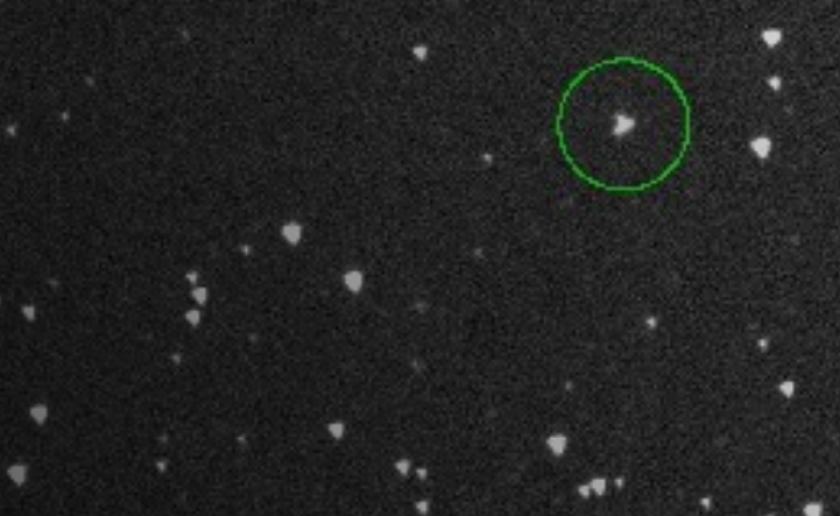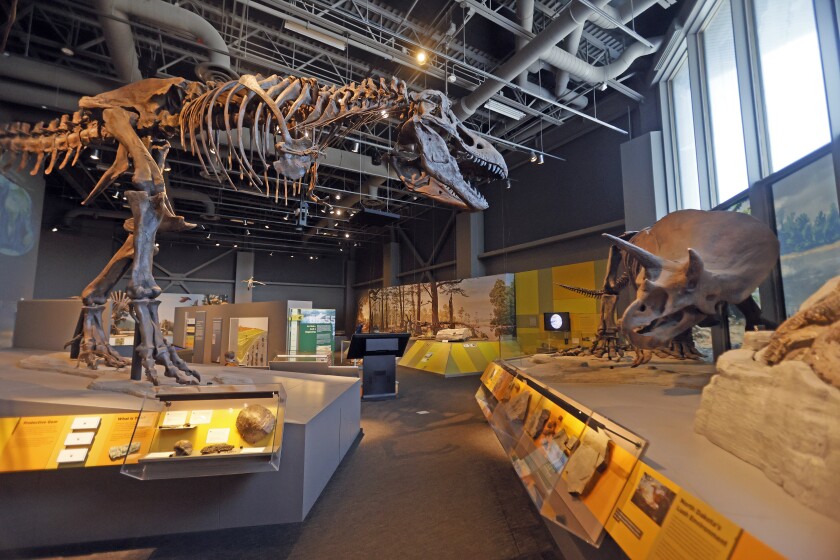GRAND FORKS, ND — Astronomers have turned their high-powered telescopes toward a 100-meter wide asteroid hurtling in its orbit through the Milky Way galaxy and are hoping it doesn’t collide with Earth in 2032.
They’re hoping because resources for asteroid observation and study are limited, and if the asteroid does veer off on a collision course with Earth, there are few ways to combat it.
ADVERTISEMENT
According to estimates, the asteroid, called 2024 YR4, had the highest chance of any asteroid to hit Earth in modern history. asteroid, meaning its orbit presents a danger to Earth, according to NASA. It is between 130 and 300 feet wide and has a fluctuating chance of impacting the planet on Dec. 22, 2032.
Although the percentage of impact is still relatively low — a fluctuating 1%, depending on the day — astronomers won’t have definitive answers until 2028, when it swings by Earth again in its orbit. Last week, Asteroid 2024 YR4 had a 3.1% chance of hitting Earth in 2032, but the numbers go up and down every day, Object Studies.
saying it was "Time to breathe a sigh of relief. The asteroid that once posed the greatest impact risk to Earth in recorded history now has an effective 0% chance of striking our planet."
Discovered in December 2024, 2024 YR4 quickly climbed to the top of , at one point having a one in 32 chance of hitting Earth. The best case scenario is that the asteroid will pass within just 167,000 miles of our planet; the moon is 238,855 miles away, according to Space.com.
Asteroid 2024 YR4 is just one of more than a million asteroids in orbit, but just another out of the 35,000 “near-Earth asteroids” out there that could become dangerous, said Sherry Fieber-Beyer, the director of the University of North Dakota's Observatory Department of Space Studies.
“It’s a city-killer, that’s what it is,” said Fieber-Beyer, who has spent much of her professional life teaching and studying the composition of asteroids, and described to Forum News Service what an impact with Earth would look like.
“It is the highest [threat] that we have ever had since NASA started doing sentry, tracking asteroids for their hazard potential,” said Fieber-Beyer. Some asteroids are composed of rock, some iron, some are even made of precious metals, she said.
ADVERTISEMENT
“Think of a four-way stop, and the only way people can travel north and south and east and west. If someone doesn’t stop, there is that chance that they’re going to encounter another vehicle right in the middle,” Feiber-Beyer said.
On Monday, March 3, the asteroid would strike the Earth in 2032, but there was a 1.7% chance it could strike the moon.
"While this asteroid no longer poses a significant impact hazard to Earth, 2024 YR4 provided an invaluable opportunity for experts at NASA and its partner institutions to test planetary defense science and notification processes," NASA reported.
Asteroid 2024 YR4’s composition is still unknown and can only be viewed by high-powered telescopes in the southern hemisphere.
Its impact on Earth could be as powerful as a 75 megaton nuclear blast, larger than the Tsar Bomb, which was detonated in the Soviet Union on Oct. 30, 1961, and had a yield of 50 megatons of TNT.
“But it depends on what it is made out of, and it’s not just the impact itself; it is what comes after the impact,” Fieber-Beyer said.
“Right away, within milliseconds, you will have a fireball, and it will be huge, a couple hundred times hotter than the Sun. And it will last for four to five minutes,” Fieber-Beyer said.
ADVERTISEMENT
Trees and grasses will combust; the impact will create a massive crater, blowing debris into the air.
“And that’s just a few milliseconds in. And then it will create a regional earthquake and because of that your structures will be destroyed, damages to bridges and dams, and railroad tracks are going to be bent,” Fieber-Beyer said.
“If you manage to survive, your eardrums will be blown out. Anything left standing, well, there will be an air blast that comes back, and that is a half a minute in and that will cause the rest of the structures to collapse,” she said.

And then the debris or “ejecta” will begin smashing back to the Earth, filling up part of the crater, burying everything in its zone.
“The risk really increases with the size of the projectile. It is very concerning to me," Fieber-Beyer said. "There are about 35,000 asteroids, and we know barely anything about them. The funding is not available for the science that is necessary to look at all of them. Our telescope time is limited. In order to get a mitigation scheme going we have to do surveys, we have to look at their compositions and look at their physical constraints. What we’re doing now is not enough.”
Asteroids come close to striking the Earth frequently.
“There is an entire suite of potentially hazardous asteroids that are projected to have at least a positive percentage of hitting Earth within the next one hundred years,” Fieber-Beyer said.
ADVERTISEMENT
Meteoroids that are small — 70 cm to one meter — can burn up in the Earth’s atmosphere, and those that reach the ground are called meteorites.
“Our general problem is that smaller bodies are hard to detect, they’re faint, we don’t know their orbits very well. And there are only so many telescopes and so many clear nights,” Fieber-Beyer said.
Most asteroids travel in their orbits, but gravitational perturbations and other changes can veer them off course, Fieber-Beyer said.
For now, astronomers can only keep track of the asteroid and won’t have more definite answers until 2028 when it swings within range again.
“Then, the orbit can be refined and models can be projected to determine its exact probability. It still could increase. It’s changing daily, up and down,” Fieber-Beyer said.
Asteroids always travel behind the Sun in their orbit, and observers will lose track of it when it does, she said.
“The probability of an asteroid hitting Earth is low, but the consequences of a strike would be devastating, locally, or regionally or globally,” Fieber-Beyer said.
ADVERTISEMENT
If the asteroid’s path ends at Earth, NASA isn’t helpless, Fieber-Beyer said. For the first time in known history, in 2022 was able to its speed and path, according to NASA.
“It’s on an orbit just like Earth and it will stay on that orbit unless it is gravitational perturbed and that will happen in 2028 and we will get a better idea of what its impact probability will really look like,” she said.
“This asteroid has the highest impact probability since the International Asteroid Warning Network began,” she said. International Asteroid Warning Network, or IAWN, is a worldwide collaboration of asteroid astronomers and modelers coordinated by NASA that can implement recommendations for a response to a near-Earth object impact threat.

impacts, such as the 125-mile-wide Chixculub Crater in Mexico’s Yucatan Peninsula, which was the likely impact site of the 6-mile-wide asteroid that 65 million years ago caused the extinction of not only the dinosaurs but 75% of Earth’s species, according to NASA.
Today, tourists can also visit the site of a more recent cosmic impact, Meteor Crater near Winslow, Arizona, a nearly-mile-wide crater caused by the impact of a 165-foot-wide asteroid about 50,000 years ago.
Even more recently, on and exploded in the skies over Siberia, and of the city of Chelyabinsk, Russia, witnessed an asteroid exploding in the atmosphere.
If an asteroid landed on the ocean, the destruction wouldn’t be as terrible “except if you’re living along the coast. It would absolutely produce tsunamis,” Fieber-Beyer said.
ADVERTISEMENT
“For an asteroid impact, it really depends on where it is going to impact, when it’s going to impact and what it is, if you have a stone asteroid or a metal asteroid,” Fieber-Beyer said.
Although NASA and other astronomers across the world are watching, Fieber-Beyer fears efforts and awareness of the dangers of near-Earth asteroids aren’t enough.
“We need more funding, we need more students to learn from those of us who do this. We need more telescopes, we just need more attention. It is the only preventable natural disaster. If we have enough warning time we can do mitigation,” Fieber-Beyer said.
“One thing North Dakota is missing is a large telescope. We have telescopes, but nothing capable of detecting small, faint asteroids,” Fieber-Beyer said.











